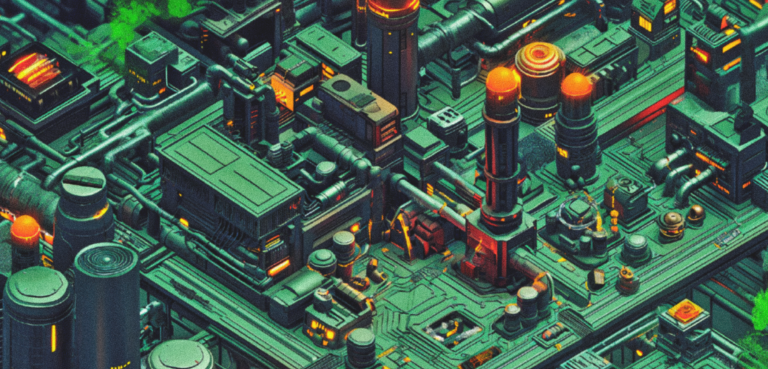
Where the IT Industry Stands with Web3 Adoption
The internet, as we know it, is on its last legs. What’s waiting to take his place? Web3.
As a quick recap, this new iteration of the internet has foundations in decentralization and blockchain technology and forges a collective effort to empower and educate its users. To propel Web3 into universal adoption, the IT industry has a huge opportunity and responsibility to stand at the forefront of change. From demystifying complex concepts to crafting intuitive user experiences, the journey towards widespread Web3 participation begins with a commitment to reshaping the framework of the internet.
Decentralization: Reshaping the Landscape
Imagine an environment where you – not the almighty Facebook – control where and how your digital data is viewed. Where financial transactions happen directly between individuals, bypassing the hefty fees of traditional banks. Where artists reap the full rewards of their work thanks to the magic of non-fungible tokens (NFT’s).
Unrealistic in today’s modern society, yes, but this is the Web3 dream. With the foundational goal of decentralization, Web3 wants to a power shift from corporations to individuals to create a more equitable and transparent digital landscape.
Web3 goal opens up IT opportunities for rapid development
As we move from some lofty ideological goals to practical development of this new iteration of internet, let’s examine where adoption of Web3 can bolster innovation, development, and problem-solving in the IT community.
- Decentralized Applications (dApps): The IT industry will play a huge role in to developing and maintaining dApps – apps that run on decentralized networks like blockchains. As these become more popular on Web3, expertise in blockchain development, smart contract creation, and UX for dApps will only continue to soar.
- Security and Scalability: As Web3 apps and user bases grow, we’ll need to develop secure systems, identify and mitigate vulnerabilities, and ensure the overall integrity of the Web3 ecosystem. How will Web3 differ from Web2? What additional security issues can we expect to see? Additionally, scaling these applications to handle millions of users concurrently will require optimizing blockchain architecture for efficiency, and developing efficient layer-2 scaling solutions.
- Data Ownership: With a focus on decentralization, data ownership won’t be as simple as assigning all data to one steward of the web and creating a single legislation. If Web3 aims to empower users to own and control their data, IT pros must figure out new ways to develop secure data storage solutions on decentralized networks and must ensure user privacy and compliance with evolving regulations. This might involve developing novel data encryption techniques, creating user-friendly interfaces for data management, and designing protocols for secure data sharing within the decentralized ecosystem.
- Interoperability: As the Web3 ecosystem evolves, establishing interoperability between different blockchains and dApps will be crucial. IT professionals will be responsible for developing standards and protocols that enable seamless communication and data exchange across the decentralized landscape. This could involve collaborating with various stakeholders in the industry to define common standards, developing interoperable bridges between different blockchains, and creating tools and libraries that facilitate seamless interaction between dApps built on different platforms.
- Emerging Technologies: Web3 is closely intertwined with other emerging technologies like artificial intelligence, machine learning, and the Internet of Things (IoT). IT professionals with expertise in these areas will be well-positioned to contribute to the development of novel Web3 applications and solutions. For instance, AI and machine learning can be used to enhance security protocols, optimize resource allocation within decentralized networks, and personalize user experiences within dApps. Similarly, IoT devices can be integrated with Web3 platforms to create new forms of decentralized applications and services.
Major roadblocks to Web3 adoption
If Web3 is so lovely, why haven’t we jumped off the metaphorical cliff yet? While Web3 presents exciting opportunities, it also comes with its own set of challenges that the IT industry needs to address before declaring us squarely amid a shift to W3.
First, scalability. Web3 hinders on the use of blockchain, which already faces limitations in scalability. This may involve exploring alternative consensus mechanisms, developing layer-2 scaling solutions, and optimizing blockchain architecture for efficiency.
Security is also a major issue. Decentralized systems are more vulnerable to ransomware, scams, financial cyberattacks compared to traditional centralized systems. The IT industry needs to develop robust security measures and best practices to mitigate never-before-seen risks and ensure the safety of user funds and data.
Finally, and most obvious, is user education. For Web3 to see major adoption, the IT industry will have to develop educational resources and user-friendly interfaces to bridge the knowledge gap and encourage wider participation in the Web3 ecosystem. A few ideas: educational materials that explain complex concepts in simple terms, developing intuitive UX, and fostering communities that support learning and knowledge sharing.
Distilled
Web3’s core principles of decentralization and user-centricity unlock opportunities for innovation, problem-solving, and career growth across the entire IT industry. However, before we reach universal adoption of Web3, we’ll need to navigate challenges in security, compliance, sustainability, and education.